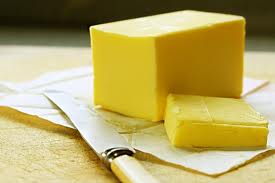 Many years ago a doctor on TV declared that the single easiest action we could all take for our health is to eat more garlic. If everybody ate it, he reasoned, the notorious garlic odor would be a non-issue and we would enjoy myriad health benefits.
Many years ago a doctor on TV declared that the single easiest action we could all take for our health is to eat more garlic. If everybody ate it, he reasoned, the notorious garlic odor would be a non-issue and we would enjoy myriad health benefits.
The health benefits of garlic (Allium sativum), a member of the lily family, have been known for millennia. From the Egyptians to Hippocrates, from the battlefields of the American Civil War to the First World War, garlic holds an important place in health history. Even Western medicine acknowledges garlic’s ability to lower cholesterol and reduce the risk of further heart attacks.
Here are just some of the health benefits of garlic.
1. Control Blood pressure: Garlic is rich in sulfur compounds that give garlic its odor but also many of its health enhancing benefits. Garlic sulfides create hydrogen sulfide gas (H2S), which helps to dilate blood vessels. This dilation helps to keep blood pressure under control. Garlic normalizes high and low blood pressure but does not disturb normal blood pressure.
2. Safely lower cholesterol: studies have found garlic effective for lowering cholesterol levels. In one German experiment, volunteers taking an 800-mg garlic tablet saw their cholesterol levels drop an average of 12 percent over four months, as effective as cholesterol medications, without the deadly side effects.
3. Prevent/treat heart disease: controlling blood pressure and cholesterol are just two ways garlic works to prevent/treat heart disease. Raw, dried, aged, and macerated garlic as well as garlic oil have all demonstrated anti-platelet effects, further enhancing garlic’s heart protection.
4. Prevent/treat cancer: Epidemiological studies find that the ingestion of garlic reduces cancer risk. In a study of 40,000 postmenopausal women, those who had a consistent intake of garlic had almost a 50% reduction in colon cancer risk. Cancer cells are vulnerable to the allyl sulfur compounds present in garlic, which slows and even prevents the growth of tumors. Animal studies conducted at Penn State University concluded that garlic helps stop the growth of tumors and contains substances that actually destroy tumor cells and promote the invasion of immune cells such as lymphocytes and macrophages to the tumor site.
5. Garlic is a powerful, natural antibiotic: Garlic has very strong antibacterial, antifungal, anti-parasitic, and antiviral properties. The antibacterial action of garlic makes it an ideal substitute for dangerous antibiotics. Garlic helps to fight such illness as colds, flu, bronchitis, chicken pox, and urinary tract infections.
6. Garlic has micronutrients: Garlic is also an excellent source of micronutrients including manganese, vitamin B6 and vitamin C. It is also a very good source of protein and thiamin (vitamin B1), as well as phosphorus, selenium, calcium, potassium, and copper.
7. Garlic kills parasites: Soldiers used garlic as an antiseptic during World War I and also as an aid to kill parasites (worms). Hookworms, pinworms, roundworms and tapeworms perish in the presence of garlic.
8. Prevent and treat colds: Garlic’s antiviral properties make it a natural cold remedy.
9. Even more: Garlic is helpful for conditions including diabetes, allergies, toothaches, impotence, and MRSA.
- Save money: a one-month supply is a few dollars at your local organic market, a pittance compared with a prescription for blood pressure or cholesterol pills. Or grow* your own.
For garlic to be effective as a healing agent and general antibiotic, it needs to be raw. Crushing or chopping activates an enzymatic process that converts alliin into allicin, which is the component responsible for most of the health benefits of garlic. For maximum allicin activation, allow the crushed or chopped garlic to sit for ten minutes to complete the enzymatic process. If cooking, do not expose to heat for longer than five minutes.
When I make my own salad dressings I often include a crushed garlic clove. It’s an easy way to include garlic in my diet. I also make garlic butter to put on fresh steamed veggies or a slice of fresh-baked whole-grain bread, my favourite way to eat raw garlic.
I also cook with it. Garlic imparts such wonderful flavour and aroma to food, it’s a staple in my kitchen.
Whenever possible, I eat garlic with or followed by parsley. The chlorophyll in parsley combats the sulfur of the garlic. Cilantro works too, but I don’t care for it. We give our dog a clove of garlic everyday in her food, along with a few sprigs of parsley. She doesn’t have garlic breath.
I encourage you to add more garlic into your diet. It’s a small step you can take to leap into better health.
Sources:
Natural News
Wikipedia
Wake-Up World
Easy Health Options
Mother Earth News
*How to grow your own garlic:
http://wakeup-world.com/2013/10/08/garlic-beats-best-selling-blood-pressure-drug-in-new-study/
http://wakeup-world.com/2013/10/18/how-garlic-can-save-your-life/


